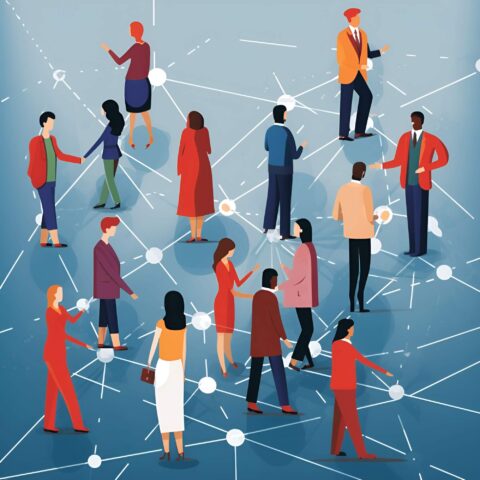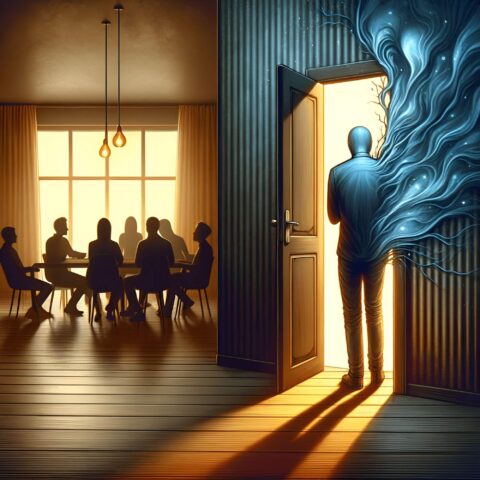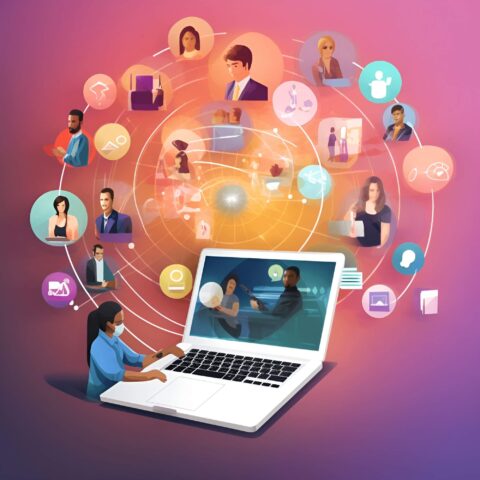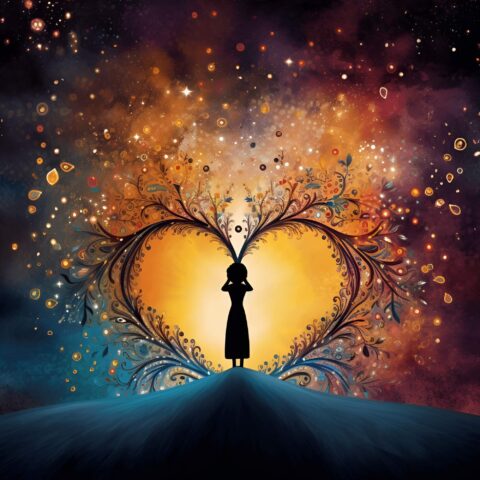Introduction
Overview of how music fosters human connection through shared experiences and emotions
Music has an unmatched power to foster human connection and bring people together. When you listen to a song, you’re sharing an experience with every other person who has heard that song.
The melodies, rhythms, and lyrics resonate across barriers of language and culture. When you attend a concert or music festival, you bond over the communal euphoria of the live performance.
You dance together, sing together, and feel a sense of belonging with strangers who just minutes before were outsiders. Music evokes common memories and taps into universal human emotions like joy, sadness, nostalgia, or catharsis.
No matter your background, music has a way of resonating with your inner experiences and making you feel connected to others going through similar things.
Across generations, geographies, and cultures, music forms a social glue binding humanity through shared moments, identities, and reactions to the same stimuli. Music speaks the universal language of human experience.
Music: it’s the heartbeat of humanity, transcending cultures, languages, and geographies to create profound connections. In every melody, beat, and lyric, there’s an opportunity for shared experiences and newfound friendships.
But what if you could amplify these connections, finding like-minded individuals who groove to the same rhythm as you, no matter where you are? Enter Z Guide.
Designed as the ultimate social compass, Z Guide brings music enthusiasts together based on their location and shared interests.
Whether you’re at a cozy coffee shop, humming your favorite tune, or exploring a new city looking for someone to attend a live concert with, Z Guide has got your back.
It’s a world where your next music buddy is just around the corner, waiting to dive deep into those soulful conversations or jam sessions.
Fancy experiencing those musical connections in real life? Dive in and see who’s vibing to your rhythm on Z Guide. Explore, connect, and let the symphony of friendships begin.
How does music allow people to connect with each other?
Music as a universal shared experience
When you listen to a song, you’re tapping into an experience shared by every other person who has heard that song. Music forms a universal social glue that binds humanity together through this shared experience.
No matter where you’re from or who you are, listening to a catchy pop song or a moving classical melody links you to the vast web of others who have listened across eras, cultures, and geographies.
This shared experience transcends space and time. Today, you can listen to a centuries-old Gregorian chant, taking part in an artistic tradition connecting monks from medieval Europe all the way to listeners in the modern age through this enduring music.
When an acoustic guitar comes on the radio, it magically links you in experience with past and present fans across the world. The access enabled by music streaming and global communications makes music an unprecedented shared experience binding humanity.
No matter when or where you listen, you tap into a human experience beyond borders that has the power to make you feel connected, uplifted, understood. Music’s universality derives from this incomparable sharing that allows it to resonate across the human collective.
Picture this: It’s a crisp Saturday afternoon, and you’re at a local cafe, sipping on your favorite brew. A familiar tune plays softly in the background, instantly transporting you back to that unforgettable summer trip where you first heard it.
As the memories wash over you, you can’t help but wonder – how many others share this same fond memory?
Enter Sophie, a fellow traveler, sitting just two tables away. She’s on Z Guide, reminiscing about that exact summer trip when she first heard the tune. With a simple check-in on Z Guide, you both realize you’re at the same cafe, reliving the same memory.
You reach out, sharing stories and laughter over the song that brought you together. Before you know it, a casual chat turns into plans for attending the next big music festival together.
This isn’t just Sophie’s and your story; it’s the story of countless others who’ve turned shared musical moments into genuine connections, all thanks to Z Guide.
Why let these serendipitous moments be left to chance? Dive into Z Guide, and make every tune an opportunity to find a friend. Join us and turn your musical memories into shared adventures.
Bonding moments at concerts and festivals
Attending a live music event like a concert or festival creates visceral bonding moments between strangers. As the lights go down and the first notes ring out, you realize you’re surrounded by fellow fans who are just as excited as you to hear this music performed live.
When the artist plays that song you’ve had on repeat, you look over and exchange an elated grin with the person next to you, wordlessly communicating a shared moment of joy.
The pulsing energy and volume of the music makes you feel connected to the shared experience of the crowd, as if the beat of the drums is synchronizing your heartbeats.
Crowd-favorites elicit a thunder of applause and singing in unison from voices new and familiar. In these powerful shared moments, boundaries dissolve between you and your neighbor who just hours ago was a stranger.
The communal mood carries over after the show, as you mingle with new friends. Concerts and festivals harness music’s unmatched power to catalyze deep human bonds.
Dancing and singing: communal expressions in the present
Few things connect people more in the moment than dancing and singing together. As the music’s rhythm takes over, you let loose on the dance floor, forgetting inhibitions. In this collective ritual, identities blur as the shared motion and energy of the crowd take over.
When a favorite anthemic chorus plays, you lift your voice alongside fellow fans, becoming part of a temporary choir. In these unscripted moments of dancing and singing together, you immerse yourself in the music, becoming an active participant in this communal expression.
Strangers synchronize their dance moves, liberated through the musical escape. Voices harmonize in impromptu singalongs, as the music weaves individuals into a collective.
Dancing and singing transform music listeners into connected, embodied performers. Music energizes these temporary communities centered around uninhibited movement and vocal expression in the now.
Musical preferences and genres as social identifiers
The music you love says a lot about who you are. Our musical preferences serve as social identifiers that connect us to others who like the same genres, artists, and songs. As a teenager, finding peers who shared your niche music taste provided a sense of belonging.
Today, your playlist represents your personality. When a new acquaintance asks what you’re into, you might reply “I’m a hip-hop head” or “I’m more of an indie rock fan”. This musical identification connects you to a broad community of fellow rap or rock enthusiasts.
Even more granular genres like “melodic house” or “progressive bluegrass” denote social groups and signal shared musical DNA between members. Music streamlining algorithms further customize our connections, linking us to people with spookily similar tastes.
Our musical identifiers welcome us into tribes and reveal the groups we identify with. So don’t underestimate the power of asking someone their favorite band – their answer might unlock a new connection.
The power of lyrics: resonating across cultures and backgrounds
Lyrics have a remarkable power to resonate across divides and foster human connection. When songwriters capture universal emotions and experiences in their words, the lyrics transcend the specifics of time and place.
A blues song from a century ago sings of heartbreak in a way that mirrors your own. Lyrics giving voice to political outrage or social injustice speak to a shared struggle.
A pop song perfectly encapsulates the butterflies of new love, connecting listeners in a shared moment of giddiness. Even lyrics in foreign languages speak to the human spirit when delivered with emotional potency.
This shared resonance derived from lyrics – our ability to see ourselves in a songwriter’s personal expression – allows music to generate empathy and understanding across centuries, cultures, languages, and ways of life.
Though the words describe one person’s specific, subjective experience, listeners connect to the universal human truths contained in lyrics’ poetry.
Moved by the magic of lyrics? Find those who feel the same on Z Guide.
Lyrics have the power to touch souls and transcend boundaries. On Z Guide, discover people who get goosebumps from the same lines as you.
Dive into poetic exchanges and share your favorite verses. Because every lyric holds a world of emotions, and sharing them doubles the joy. Come, let’s resonate.
Transcending language: melodies and rhythms as connectors
While lyrics can resonate across cultures, music’s melodies and rhythms have an even more universal power to connect. A melody’s contour and tonality express emotion without requiring words.
A rhythm’s groove and meter ignite instinctual movement across generations and backgrounds. These foundational musical elements allow songs to transcend language and cultural barriers.
A violin melody can make tears well up in the eyes of listeners thousands of miles apart who don’t know the composer or understand the lyrics. Traditional drum patterns unite participants in ceremonial dances from Africa, the Middle East, and Latin America.
The blues scale conjures a melancholic yet warm mood across its iterations in jazz, rock, and folk music globally.
These building blocks of music form a universal vocabulary that enables emotional communication, shared experience, and intercultural connections in a way the spoken and written word cannot.
Music’s primal qualities of rhythm, melody, and harmony thus have unmatched power to unite humanity across the boundaries of language, distance, and culture.
How does music help people connect with themselves?
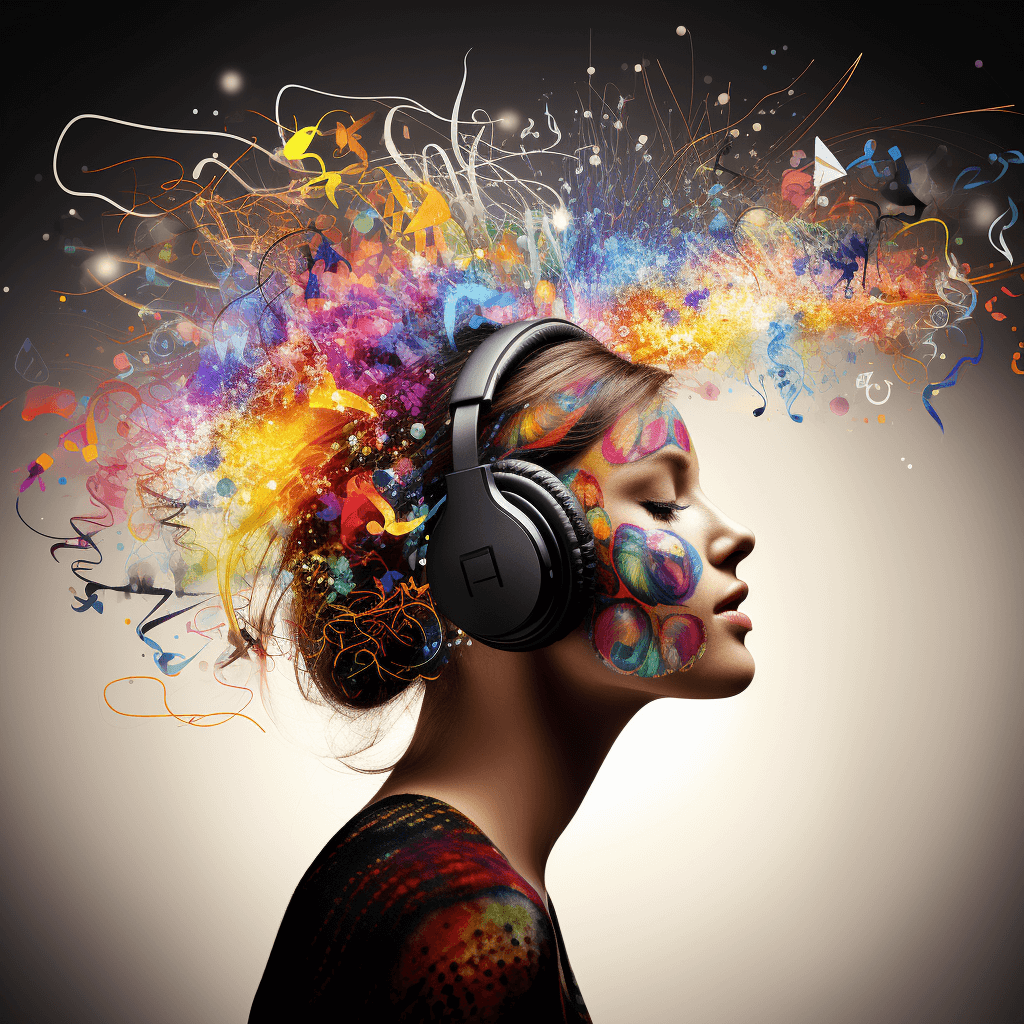
Music as a catalyst for memory and nostalgia
Music has a singular power to transport you back through memory and connect you with past versions of yourself. The opening notes of a song can magically conjure up memories of people, places, and specific moments in your life.
Even decades later, hearing a favorite childhood song again can vividly evoke people and experiences from your past. Music provides a soundtrack to our lives, tying together memories into coherent narratives.
A song your family always played on road trips; the album that got you through a bad breakup; that tune you danced to at prom – music anchors these flashbulb memories.
This ability for music to catalyze individual and cultural nostalgia forges an intrapersonal connection across our own lives. Music allows you to re-experience and reflect on cherished memories and relationships that shape your personal story.
By conjuring our memories and nostalgia, music functions like a time machine, allowing us to connect with our past.
Have a song that takes you down memory lane? Share your nostalgia trips with like-minded souls on Z Guide.
Some tunes just hit differently, bringing back floods of memories. With Z Guide, you can share those golden moments with people who get it. Whether it’s an old classic or a forgotten gem, someone else is waiting to reminisce. Join us, share your story, and let the nostalgia flow.
Reflecting and amplifying inner experiences
Music has a mirror-like ability to reflect and amplify our inner experiences. When you listen to a song that captures how you currently feel, it is as if the music is putting your own emotions into melody and lyrics.
A mournful ballad lends shape and catharsis to your sadness after heartbreak. An upbeat dance track amplifies and energizes your excitement. Music can even help clarify ambiguous emotions, connecting you more deeply with your inner state.
Researchers have found that we often select music that resonates with our current mood – whether positive or negative. This empathic quality allows music to both mirror and regulate our emotions.
By giving form to feelings within us, music fosters self-insight and reveals we are not alone in our emotional lives. Shared musical experiences become external representations of our private inner worlds.
Music’s ability to reflect and distill the human condition connects us to the essential experiences we all share.
Music’s role in emotional catharsis and release
Music can provide a powerful emotional release, allowing us to purge pent-up feelings. When you need catharsis after a tough week, a stirring song can produce just the right emotional outpouring.
Punching the steering wheel while belting out a breakup anthem cleanses your pain and anger. Shedding tears during a melancholy ballad brings cleansing relief. Dancing freely to an electronic beat loosens inhibitions and liberates the spirit.
Research shows singing and dancing to music increases endorphins and other mood-boosting neurotransmitters. Music provides a constructive channel for experiencing and expressing emotions that may otherwise remain bottled up inside us.
Through this emotional catharsis, music soothes and renews. The shared experience of musical release, whether at a club or concert, bonds us through liberating rituals fueled by rhythm and song.
Music’s ability to tap into our deepest feelings and provide an outlet of expression connects us by channeling our common humanity.
How music facilitates connection across generations?
Bonding over shared and contrasting musical tastes
Music tastes can forge intergenerational bonds, whether through shared favorites or playful debates. Grandparents often pass down beloved family records, bonding with grandkids over classics like Elvis or Motown.
Teenagers eagerly share their latest genre obsessions with parents, expanding horizons. Comparing and contrasting musical preferences across generations leads to amusing conversations and new discoveries.
Age-spanning collaborations like Tony Bennett and Lady Gaga fuse generations through fresh interpretations of standards. Families bond over musical rituals like singing carols or lighting fireworks to favorite patriotic anthems.
Even when musical tastes diverge, the passion for music endures across generations. Grandkids invariably find that grandparents still love dancing to their favorites from the past.
Respectful debates over the merits of new versus old genres reveal changing times while affirming music’s timeless power to connect.
Ever bonded over a shared love or a friendly debate on music genres? Dive into such conversations on Z Guide.
They say opposites attract, and sometimes they make the best music buddies. On Z Guide, celebrate similarities and cherish differences in musical tastes.
Find your next favorite song or introduce someone to a new genre. Music debates, shared playlists, endless fun – that’s our tune!
Legacy of musical traditions in families
Music weaves through family history, as traditions get passed down through generations. Singing lullabies your grandma once sang to your mom, then your mom to you. Pulling out your dad’s vinyl collection to share seminal albums with your kids.
Annual family reunions where you reprise musical performances and sing-alongs from ages past. For families of musicians, the torch gets passed from one generation to the next, keeping musical gifts alive.
Even casual family traditions like car singalongs or holiday music rituals keep musical DNA in the bloodline. These hand-me-down songs and tastes root children in their ancestry and identity.
Technology now enables preserving and disseminating family musical traditions more widely. Shared playlists keep favorite tunes circulating. Home movies capture impromptu family jam sessions for posterity.
By imparting this musical knowledge and passion through generations, families strengthen musical connections and carry cultural heritage into the future.
Exploring eras: intergenerational musical exchanges
Music can spark intergenerational exchanges as we share favorites from our own eras.
Grandparents love dusting off the record player and teaching grandkids to twist and shout to vintage vinyl. In turn, grandchildren expose elders to new artists through streaming playlists tailored to their tastes.
Teenagers eagerly play their latest song obsessions for parents and grandparents, leading to amusing reactions and nostalgic stories of their musical heydays. Across generations, sharing meaningful songs provides insight into an era’s culture and events.
Grandparents reminisce about romantic songs from their courting days, while parents explain the messages behind their rebellious teen anthems. Respectful cross-generational music conversations reveal how each era’s soundtracks shape personal identities.
Exploring the evolution of genres across decades notes how music mirrors changing times while still probing universal themes. Music gives every generation a cultural snapshot to share across age groups.
How does music foster social bonding and relationships?

The reinforcing nature of shared musical tastes
Finding someone who shares your musical passion can create an instant bond. When a new friend, date, or colleague responds with mutual enthusiasm about your favorite niche band, a pleasant shock of connection energizes the conversation.
You excitedly trade little-known facts, feeling understood. Even just meeting someone sporting the tour shirt of an obscure act you love makes them an instant ally.
Researchers have found shared musical tastes reinforce bonds between friends and romantic partners through biophysical synchronization and released endorphins during co-listening. Partners who share musical passions report higher relationship satisfaction.
Life’s ups and downs feel more manageable when you can commiserate with friends over a shared playlist. Shared musical DNA helps foster a sense of community and belonging.
Experiencing emotional musical moments together, whether dancing, singing, or reminiscing, creates powerful communal memories. Music’s ability to quickly reinforce social bonds through revealed mutual passions universalizes the human experience.
Ever felt closer to someone just by sharing a playlist? Strengthen such bonds on Z Guide.
Music has a mysterious way of drawing hearts closer.
With Z Guide, discover individuals who groove to your kind of music. Share, discuss, and let those bonds grow stronger. Because every shared track is a step closer to friendship. Tune in and turn it up.
The role of music in social rituals and milestones
Music shapes collective experiences during major social rituals and milestones. We reinforce our bonds through shared musical traditions surrounding birthdays, weddings, graduations, holidays, and more.
Singing together on a birthday catalyzes group camaraderie. The couple’s first dance song becomes a romantic milestone. Alma maters rouse nostalgia at high school reunions decade after decade. Anthemic ballads mingle grief at memorial services.
Music establishes continuity and community across the cycles of life. Even stepping out to a favorite club with friends ritualizes through rhythmic songs, synchronizing moods and memories.
Research shows these musical rituals release social neurotransmitters like oxytocin, endorsed as the “love hormone.” By infusing ceremonial rites of passage with song, humanity elevates life’s journey into something harmonious and communal.
Music deepens the meaning and connections formed during occasions that mark our temporary time here.
The creation of collective memories through music
Music forges shared memories within social groups, communities, generations, and cultures. These collective memories surrounding songs, artists, and eras unite us through common experience.
The soundtrack at your high school dance creates indelible memories relived at every reunion. An anthem released during a historical event becomes forever linked to that era. When a beloved musician passes, mourning their loss together strengthens communal bonds.
Singalongs around campfires or holidays elicit nostalgia for childhood summers. Even everyday carpool singalongs ritualize daily connections. Researchers find musical memories enhance group cohesion and identity building.
Syncing movements while dancing imprints embodied memories set to music. Humming a shared melody conjures nostalgic feelings synchronized across minds.
Music melds individual recollections into enduring collective memories. Songs distill an era’s ethos into communal relics rediscovered through sound.
How music connects people across geographic and cultural barriers?
The globalization of music via technology
Recent innovations have accelerated the globalization of music, fostering worldwide connections. The internet and music streaming services give immediate access to a cross-pollination of global genres, from K-pop to reggaeton.
Music sharing platforms empower global collaborations between artists and dissemination of songs across borders. Home recording technology enables DIY musicians worldwide to produce and release music to potential fans everywhere.
Digitization democratizes music creation, sharing, and consumption. Technologies like AI even auto-translate lyrics, helping songs leap over language barriers. Social media and real-time translation break down geographical and cultural walls between artists and listeners.
While preserving local musical heritage, technology propels emerging blended genres and multicultural musical exchanges. One can now experience a 21st century global soundtrack, appreciating how music intertwines worldwide.
The innate human desire for communal music listening and dancing now manifests in global virtual gatherings.
Fascinated by how tech brings global tunes to your doorstep? Explore this musical universe on Z Guide.
The world is a playlist, and with Z Guide, you’re always on shuffle mode. Dive into global rhythms, discover new cultures, and connect over universal melodies. From local beats to international chart-toppers, the world’s music is at your fingertips. Explore and connect.
Festivals: converging points for diverse musical and cultural experiences
Music festivals worldwide have become vital converging points for diverse artistic and cultural exchanges. Giant gatherings like Glastonbury, Fuji Rock, Roskilde, and Lollapalooza draw awe-inspiring arrays of genres, languages, and attendees.
Fans experience a thrilling sensory tapestry while discovering new music and traditions. The communal spirit fosters openness to unfamiliar cultures expressed through sound.
Chance encounters with attendees from vastly different backgrounds lead to befriending and future roots music explorations. Back home, playlists preserve these musical trip memories.
Historic world music festivals like Jamaica’s Reggae Sunsplash boosted cultural awareness and pride. Today’s global festivals accelerate musical hybridization, with artists collaborating onsite. As festivals prioritize environmentalism as well, music sustains its role as a healing force.
By showcasing our human musical diversity alongside shared values, festivals promote cultural empathy and exchange.
Understanding and connecting with diverse cultures through their musical expressions
Music allows us to bridge cultural divides by fostering appreciation for diverse traditions. Experiencing other cultures’ musical forms, instruments, and practices expands perspectives. The rhythmic polyrhythms of West African drumming reveal regional intricacies.
Indian ragas employ melodic frameworks illuminating cultural values like spirituality. Indigenous Andean panpipe ensembles and Polynesian haka dances convey worldviews through song. Even mainstream global pop cross-pollinates sounds, channeling cultural interchange.
As music evolves via cultural mixing, it promotes intercultural respect. Learning the backstories of musical styles combats stereotypes with nuance and compassion.
Musical exchanges propagate cultural metamorphosis and cohesion, from Afro-Cuban jazz to hip-hop’s Brazilian offshoots.
When we honor how marginalized groups express identity and resilience through music, ethical engagement results. Music enables celebrating humanity’s mosaic without appropriation. Deep listening forges unity through diversity.
Conclusion
Recapping music’s unmatched role in bridging divides
As we’ve explored, music holds unrivaled power to transcend boundaries and bridge divides within our social worlds. Its melodies and rhythms connect us on a primal, physiological level.
Lyrics resonate across cultures by voicing universal human truths. Music ignites collective memories and rituals that reinforce social bonds. It provides catharsis and emotional release, uniting us in shared inner experiences.
Technological innovations continue expanding music’s scope as a cultural unifier. While respecting diverse musical heritages, the language of music recognizes our common humanity. After all, we are more alike than different in our essence.
Music’s singular capacity to cross spatial, generational, cultural, and linguistic divides reveals our interconnectedness. It provides hope that harmony can be achieved if we tune our ears – and hearts – to our shared songs.
Celebrating music’s universal language of human experience
Music’s unparalleled power is its ability to distill the broad spectrum of human experience into a universal language that transcends boundaries. Songs give form to emotions and experiences common across humanity.
Rhythm and melody express what words cannot, moving our spirits. Lyrics voice private struggles and triumphs in ways that resonate widely. Music mirrors our inner states while catalyzing emotional release.
It conjures nostalgia and collective memories that reinforce social bonds. Technological innovations continue expanding music’s scope as a cultural unifier. Music reminds us that while languages and customs differ, certain truths unite our shared existence.
When music evokes wonder, joy, heartache, passion, hope, or courage, we are connected in a transcendent human experience. By giving enduring expression to life’s ephemeral moments, music’s universal language celebrates both our diversity and common spirit.
As we’ve journeyed through the powerful chords and melodies of music’s ability to connect us, it becomes clear that these connections aren’t just fleeting moments – they’re the foundation of lasting friendships.
With each song, we’re weaving a tapestry of shared experiences, memories, and emotions. Z Guide amplifies this magic, offering you a space to not just listen but to truly connect.
So, as the final note fades and you find yourself yearning for more musical camaraderie, remember: your next song-inspired friendship is just a click away. Join Z Guide, and let the encore of connections begin.


